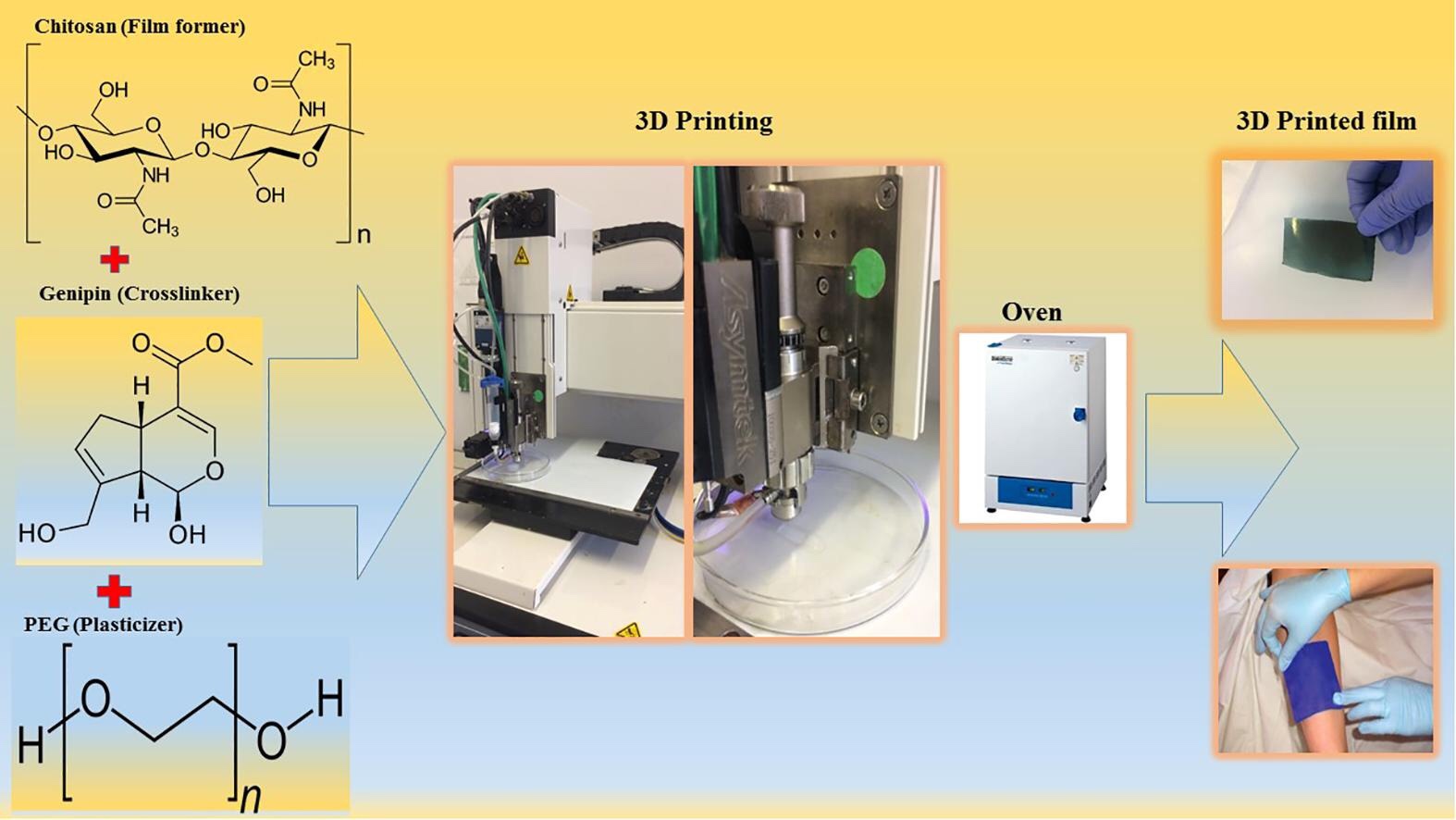3D printed chitosan dressing crosslinked with genipin for potential healing of chronic wounds

Recently, various additive manufacturing (3D printing) approaches have been employed to fabricate dressings such as film scaffolds that possess well-defined architecture and orientation at the micro level. In this study, crosslinked chitosan (CH) based film matrices were prepared using 3D printing with genipin (GE) as a crosslinker, with glycerol (GLY) and polyethylene glycol (PEG) as plasticizer.
The 3D printed films were functionally characterized using (tensile, fluid handling, mucoadhesion, drug dissolution, morphological properties and cell viability as well physico-chemical characterization using scanning electron microscopy, Fourier transform infrared spectroscopy and X-ray diffraction. CH-GE-PEG600 3D printed films having the ratio of 1:1 polymer: plasticizer was selected due to their appropriate flexibility. Fourier transform infrared results showed intermolecular interaction between CH, GE and PEG which was confirmed by X-ray diffraction showing amorphous matrix structure. In vitro mucoadhesion studies of CH-GE-PEG600 films showed the capability of the 3D printed film to adhere to the epithelial surface.
Scanning electron microscopy images showed that the surface of the plasticised films were smooth indicating content uniformity of CH, GE and PEG whilst micro cracks in unplasticised films confirmed their brittle nature. Plasticised films also showed high swelling capacity which enhanced water absorption. Cytotoxicity (MTT) assay using human skin fibroblast cell lines demonstrated that more than 90% of cells were viable after 48 h confirming non-toxic nature of the 3D printed CH-GE-PEG600 films and therefore promising dressing for chronic wound healing applications. Continue on 3D printed chitosan dressings

